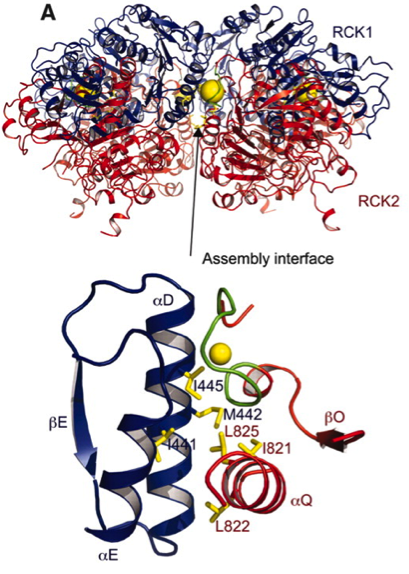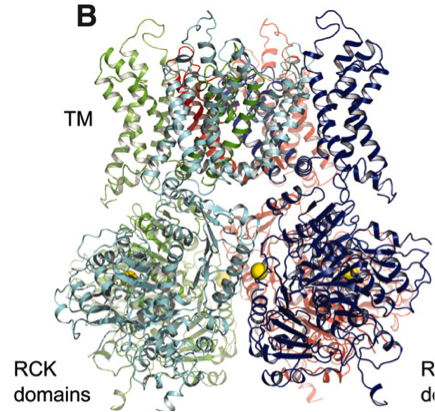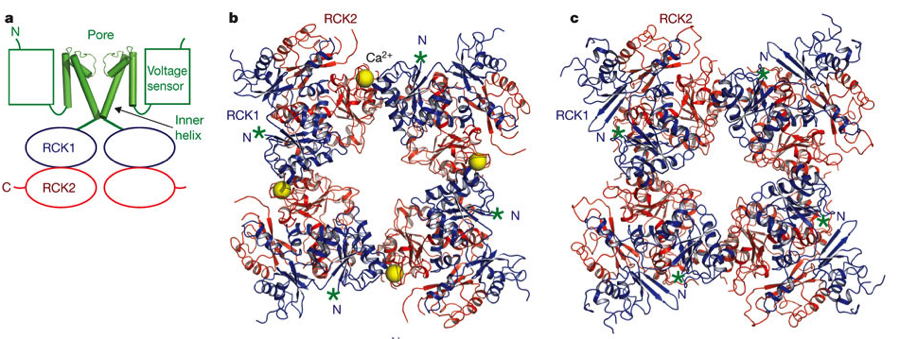BK Gating Ring Crystal Structure

The BK gating ring solution. (A) Orthogonal views of the tetrameric gating ring structure using 6.0 Å diffraction data from the homologous chicken Slo2.2 CTD. (Right) View is down the fourfold symmetry axis, with RCK1 in blue and RCK2 in red. The Ca2+ ions are shown as yellow spheres. The flexible and assembly interfaces are labeled, and a close-up view of the assembly interface is also shown.

A model of the BK channel. (B) Stereoview of the BK model from the side with the transmembrane domain above. Each subunit of the tetramer is colored differently.
Yuan, P., Leonetti, M.D., Pico, A.R., Hsiung, Y., MacKinnon, R. (2010). Structure of the human BK channel Ca2+-activation apparatus at 3.0 Å resolution. Science, 329(5988), 182-186. doi: 10.1126/science.1190414

a, Domain topology of the BK channel. For clarity, only two opposing subunits are shown. b, Crystal structure of the Ca2+-bound, open, gating ring, with RCK1 in blue and RCK2 in red. The Ca2+ ions are shown as yellow spheres. The N termini of RCK1 that connect to the C termini of the inner helices are indicated as green asterisks. c, Structure of the Ca2+-free, closed, gating ring, with RCK1 in blue and RCK2 in red (PDB accession 3NAF).
Yuan, P., Leonetti, M.D., Hsiung, Y., MacKinnon, R. (2011). Open structure of the Ca2+ gating ring in the high-conductance Ca2+-activated K+ channel. Nature, 481(7379), 94-7. doi: 10.1038/nature10670.
